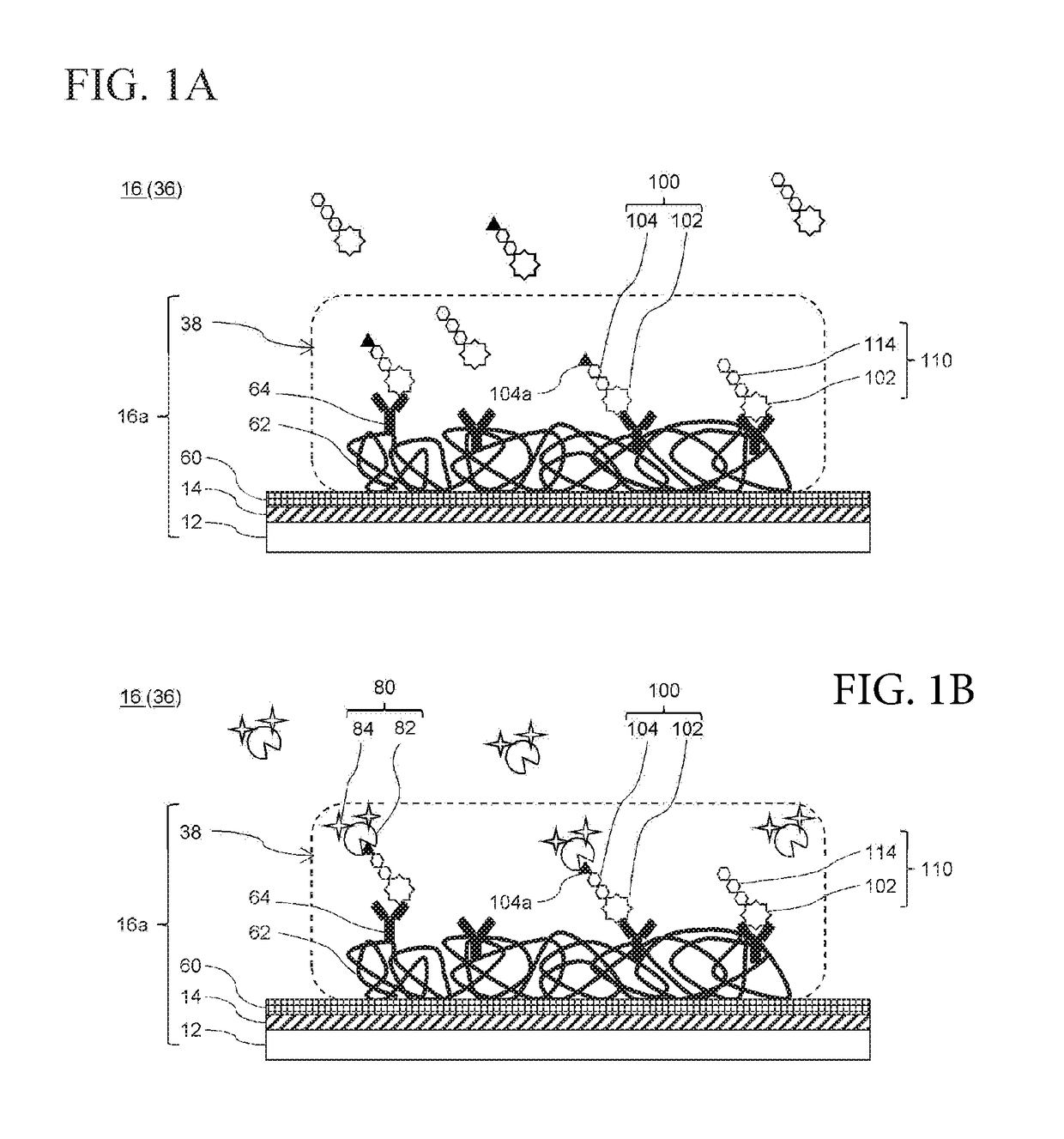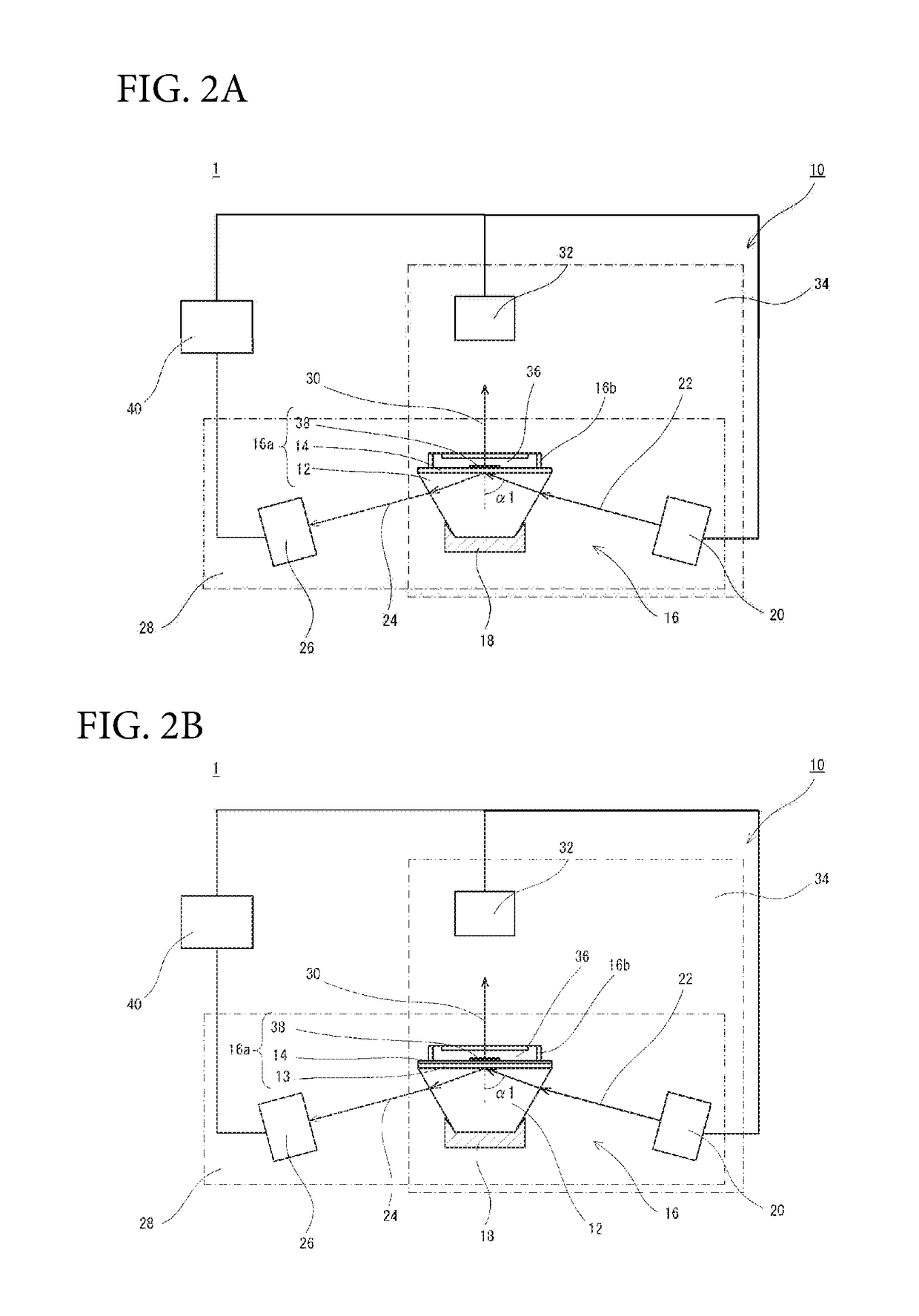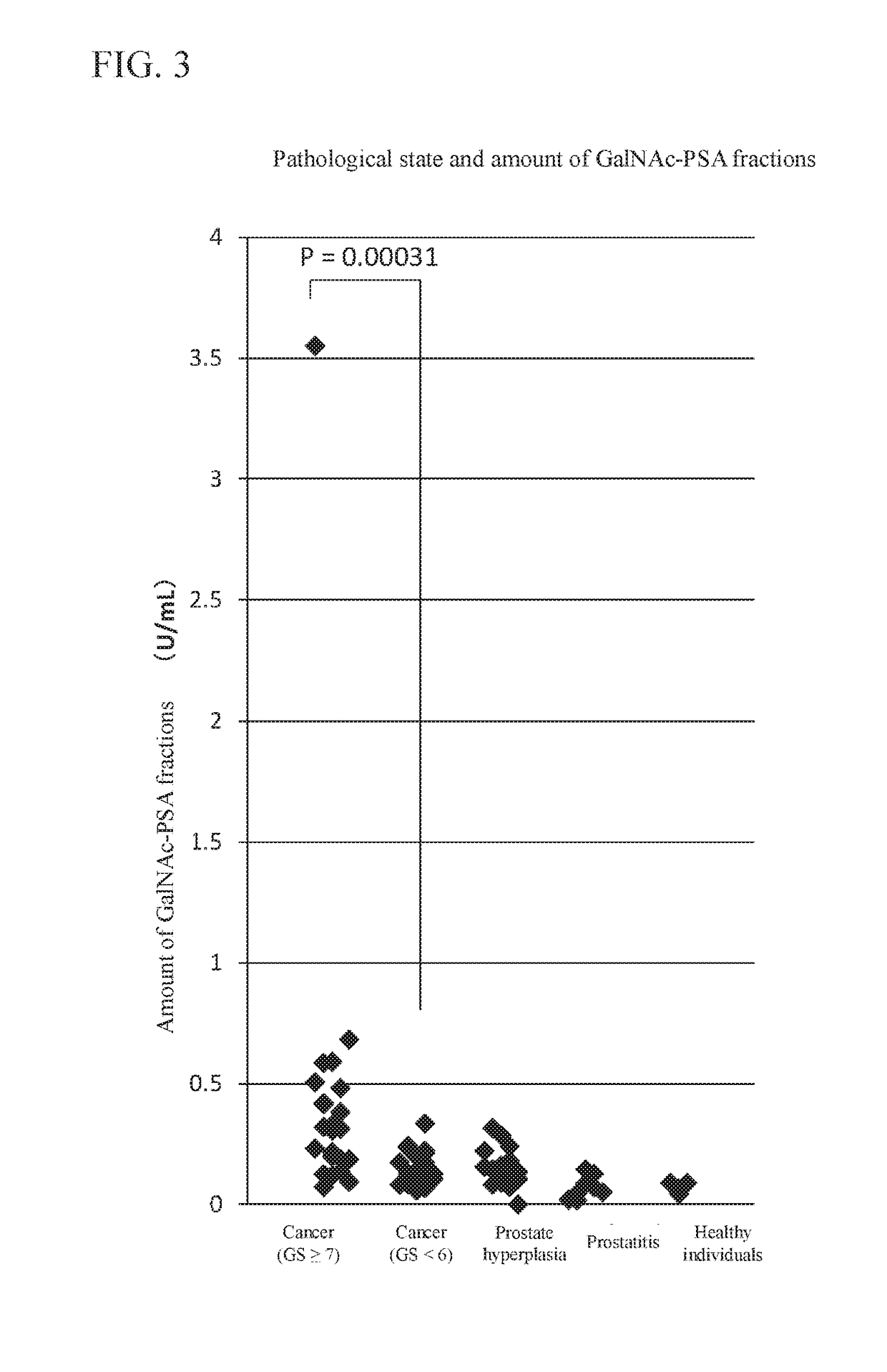Method for estimating pathological tissue diagnosis result (gleason score) of prostate cancer
a prostate cancer and diagnosis result technology, applied in the field of pathological tissue diagnosis result (gleason score) of prostate cancer, can solve the problems of high invasiveness and high cost for patients, diagnosis cannot, etc., and achieve the effects of low invasiveness, low cost and heavy burden on patients
- Summary
- Abstract
- Description
- Claims
- Application Information
AI Technical Summary
Benefits of technology
Problems solved by technology
Method used
Image
Examples
preparation example 1
[Preparation Example 1] Anti-PSA Monoclonal-Immobilized Substrate
[0092]An external flow channel and a peristaltic pump were connected to the produced flow channel-type SPFS measuring member, and ultrapure water and then phosphate buffered saline (PBS) were circulated for 10 minutes and 20 minutes, respectively, at room temperature (25° C.) and a flow rate of 500 μL / min, whereby the surface of the plasmon excitation sensor was equilibrated.
[0093]Subsequently, after circulating 5 mL of a phosphate buffered saline (PBS) containing 50 mM of N-hydroxysuccinimide (NHS) and 100 mM of water-soluble carbodiimide (WSC) for 20 minutes, 2.5 mL of an anti-PSA monoclonal antibody solution was circulated for 30 minutes so as to allow the antibody to bind to CMD, whereby an anti-PSA monoclonal antibody-immobilized CMD film (measurement region) was prepared.
[0094]Thereafter, by circulating a phosphate buffered saline (PBS) containing 1% by weight of bovine serum albumin (BSA) for 30 minutes, a non-s...
example 1
[Example 1] SPFS Measurement Using Alexa Fluor 647-Labeled WFA
[0098]Using the flow channel-type SPFS measuring member comprising the anti-PSA monoclonal antibody-immobilized substrate (Preparation Example 1) and the fluorescently-labeled WFA (Production Example 1), GalNAc-PSA contained in each test sample shown in Table 1 was quantified by SPFS. The details thereof were as follows.
TABLE 1Benign diseaseProstate cancerProstaticHealthyGS ≥7GS ≤6hyperplasiaProstatitisindividualsNumber of25212084casesGleason 7 (3 + 4): 166 (3 + 3): 21———score (GS)7 (4 + 3): 6breakdown8 (4 + 4): 29 (4 + 5): 1
[0099]100 μL of a dilution solution was added to 20 μL of each test sample (serum), and the resultant was thoroughly stirred in a test tube to prepare a mixed solution. This mixed solution in an amount of 100 μL was circulated in the flow channel and allowed to react with the measurement region for 60 minutes. The flow channel was subsequently washed for 3 minutes by TBS (TBS-T) containing 0.05% by we...
example 2
[Example 2] SPFS Measurement Using Alexa Fluor 647-Labeled SBA
[0102]From the test samples shown in Table 1, a total of 8 samples consisting of 4 samples derived from prostate cancer patients having a Gleason score of 7 or higher and 4 samples derived from prostate cancer patients having a Gleason score of lower than 6 were randomly selected as measurement subjects. The fluorescence intensity (signal) of Alexa Fluor 647 was measured by SPFS and the GalNAc-PSA concentration (fraction amount) of each test sample was determined in the same manner as in Example 1, except that the Alexa Fluor 647-labeled SBA (SBA concentration: 10 μg / mL) obtained in Production Example 2 was used in place of the Alexa Fluor 647-labeled WFA solution (WFA concentration: 10 μg / mL).
[0103]The results thereof are shown in FIG. 4. It was confirmed that the use of SBA as a lectin also shows the same tendency as the use of WFA (Mann-Whitney U-test, p=0.00428).
PUM
 Login to View More
Login to View More Abstract
Description
Claims
Application Information
 Login to View More
Login to View More - R&D
- Intellectual Property
- Life Sciences
- Materials
- Tech Scout
- Unparalleled Data Quality
- Higher Quality Content
- 60% Fewer Hallucinations
Browse by: Latest US Patents, China's latest patents, Technical Efficacy Thesaurus, Application Domain, Technology Topic, Popular Technical Reports.
© 2025 PatSnap. All rights reserved.Legal|Privacy policy|Modern Slavery Act Transparency Statement|Sitemap|About US| Contact US: help@patsnap.com



